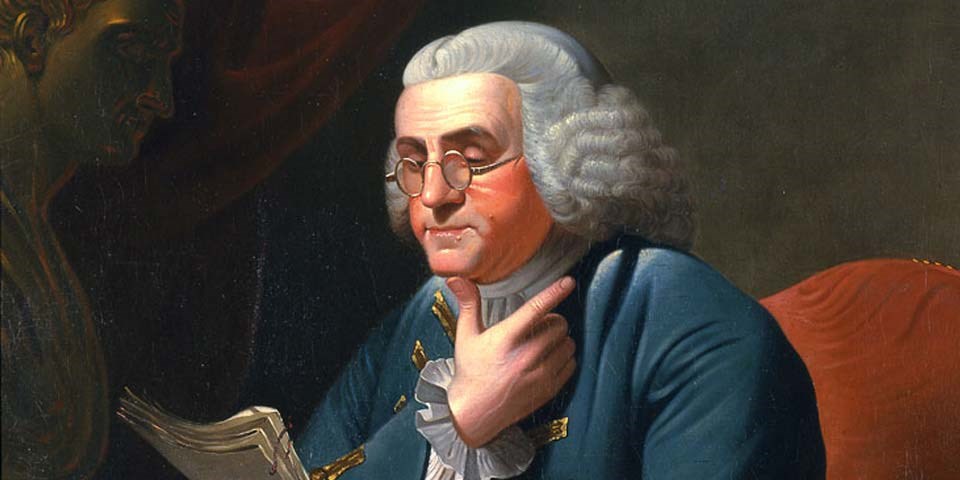Many of us might feel mired in one side of our brain. We’re left-brained scientists and engineers, right-brained artists and authors.
But there are rare exceptions, the both-brained sort. They’re as exotic as Leonardo da Vinci … or as down-to-earth as Benjamin Franklin, the subject of Ken Burns’ latest PBS documentary (8 p.m. Monday and Tuesday, April 4-5, repeating at 10).
“He was able to connect art and science, able to connect the humanities and the technology,” biographer Walter Isaacson said of Franklin (shown here in an artist’s rendition). “He cared about everything you could possibly learn about, from art to anatomy, math to music.”
The science side was clear. Franklin invented (and refused to patent) the lightning rod, bifocals, the Franklin stove. He did elaborate studies in oceanography, refrigeration, demographics and more.
But alongside that was what Burns calls “a kind of hyperliteracy.”
He wrote often and well – but not in the stiff style of the upper classes. “It is a casual, cracker-barrel type humor,” Isaacson said. It’s a style that “leads you to Mark Twain and Will Rogers and so many others, and it pokes fun at the pretensions of the elite.”
Franklin was far removed from some of the founding fathers, who were prosperous landowners.
The son of a craftsman and grandson of a farmer-blacksmith, Franklin ended his schooling at 10, began apprenticing at his brother’s Boston print shop at 12 … and fled from that apprenticeship at 17. In Philadelphia, he had the technical skills needed for printing, but added witty writing.
It’s tempting to focus on Franklin’s strengths, said Sylvia Bugg, PBS’ chief programming executive. He was “the greatest American writer of the period, the greatest scientist on this continent.”
But there was also the dark side, she said. “At least six enslaved individuals lived and labored in the Franklin household. And Franklin’s newspaper, the Pennsylvania Gazette, earned advertising revenue from the sale of enslaved people and notices (pursuing) runaways.”
Fortunately, he lived long enough to change, spending his final years speaking out against slavery.
In a revolution led by young men, Franklin was the exception. He was 26 years older than George Washington, 37 years older than Thomas Jefferson. He was already 70 when he co-wrote and signed the Declaration of Independence and lived to 84.
The others went to war; Franklin went to France. As a diplomat there, he was a natural.
“He’s a total rascal,” said historian Erica Armstrong Dunbar. “He’s this larger than life (figure). He’s someone the common man can connect with.”
And the French connected with him. Their military aid helped seal a long-shot revolution.
